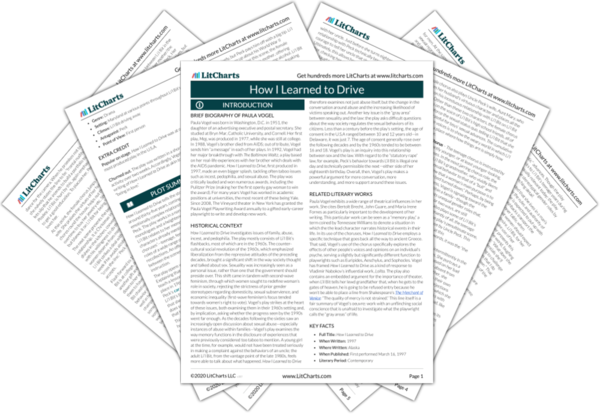Paula Vogel exhibits a wide range of theatrical influences in her work. She cites Bertolt Brecht, John Guare, and Maria Irene Fornes as particularly important to the development of her writing. This particular work can be seen as a “memory play,” a term coined by Tennessee Williams to denote a situation in which the the lead character narrates historical events in their life. In its use of the choruses,
How I Learned to Drive employs a specific technique that goes back all the way to ancient Greece. That said, Vogel’s use of the chorus specifically explores the effects of other people’s voices and opinions on an individual’s psyche, serving a slightly but significantly different function to playwrights such as Euripides, Aeschylus, and Sophocles. Vogel has framed
How I Learned to Drive as a kind of response to Vladimir Nabokov’s influential work,
Lolita. The play also contains an embedded argument for the importance of theater, when L’il Bit tells her lewd grandfather that, when he gets to the gates of heaven, he is going to be refused entry because he won’t be able to place a line from Shakespeare’s
The Merchant of Venice: “The quality of mercy is not strained.” This line itself is a fair summary of Vogel’s oeuvre: work with an unflinching social conscience that is unafraid to investigate what the playwright calls the “gray areas” of life.
